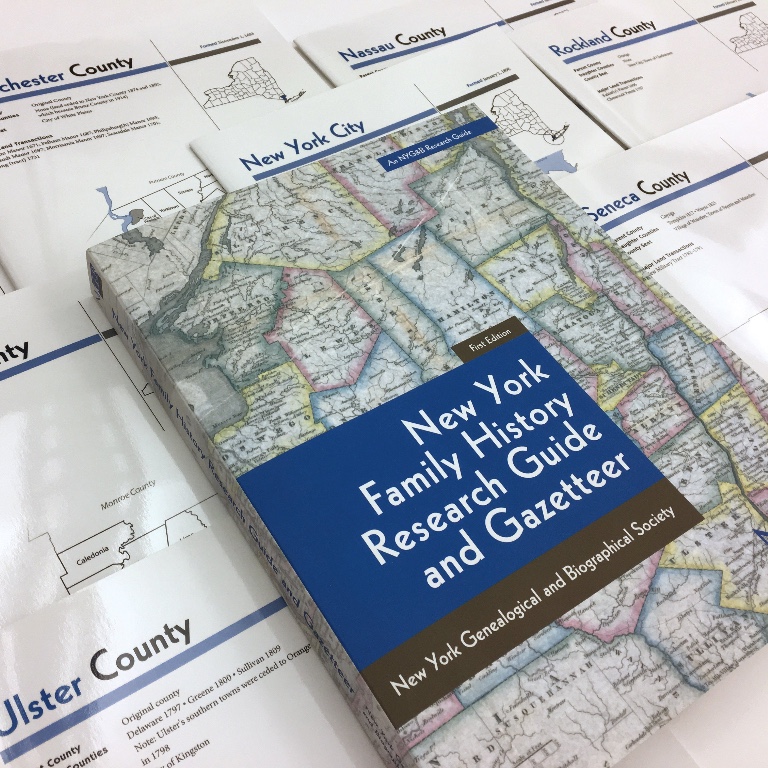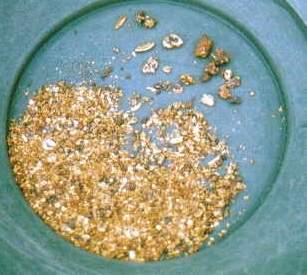FamilySearch is an excellent resource for genealogists everywhere, especially those of us seeking to use the ever-growing number of digital records available online.
You can perform a wide variety of name-based searches on FamilySearch, which query their entire collection of digitally-indexed records - that's over 640 million images!
But did you know that by using only the search engine on FamilySearch, you're missing out on over 450 million images?
That's about 42% of the genealogically-relevant images that FamilySearch has made available.
This blog will cover the must-know information on these records, including two huge collections that are essential for New York State research - land records and probate records.
This blog post covers just the tip of the iceberg - we have an excellent webinar that goes in-depth on this subject, from Robert Raymond, Deputy Chief Genealogical Officer at FamilySearch - Hidden Treasure from FamilySearch.
The recording is available to NYG&B members - we highly recommend watching the whole thing. If you're not yet a member, join today for immediate access. The cost of an Individual Annual Membership works out to be less than six dollars a month!
What does an "image only" collection mean?
At this point, many genealogists are so used to the act of entering information into search engines and simply clicking "submit" - these searches are fantastic, since they point us to the exact location of the record image, and provide excellent contextual information about the person found in that record.
But to have this convenience, the set of digitized images needs to have a digital index linked to it. Creating an index that can be linked in such a way is a huge project, requiring an army of savvy volunteers, technical know-how, and lots of time. Therefore many digital image sets do not have a digitally linked index, are are considered image only record sets - they can't be easily searched.
Because we're all so used to the convenience and ease that these linked digital databases provide, it may seem burdensome to be faced with an image only record set. But think about genealogists before the internet! They never had the ability to perform such searches, and that didn't stop them.
The presence of the digital images themselves is a game changer that we should be immensely thankful for. Not only can you browse from your couch, but you can use the tools and techniques discussed in this article to browse these collections faster than ever before.
Where to find image only collections on FamilySearch
There are several ways to locate image only collections on FamilySearch. We recommend beginning your search based on location.
To see a nice concise list of record sets for New York, click the "Records" link underneath the "Search" drop-down menu from the familysearch.org homepage.
Select New York from the list that pops up, and you'll land on the New York State Research Page. Scroll down until you see a section titled New York Image Only Historical Records - this list will show available sets of images ready to browse, broken down by category.
But FamilySearch has more image only collections than can be found here - for a more comprehensive overview of available online resources for New York State, click the "Catalog" link underneath the "Search" drop-down menu found at the top of the page.
 Begin typing "New York" under place, and select "United States, New York" to see all of New York State. Select "Online" from the drop-down menu below, and then click "Search."
Begin typing "New York" under place, and select "United States, New York" to see all of New York State. Select "Online" from the drop-down menu below, and then click "Search."
You'll then see the entire list of digital resources for New York State, including record sets, digitized microfilm/fiche, and also digitized books (FamilySearch has an enormous and useful collection of digitized books).
Navigate using waypoints
As you explore the image only collections, you'll begin to see how truly massive many of them are. They often contain tens of millions of images!
The prospect of browsing through the whole set really brings to life the "needle in a haystack" analogy we hear so often in the world of genealogy.
The good news is, there are several strategies - discussed in detail in Robert Raymond's webinar on image only collections - that you can use to make navigating these images a breeze.
The first is by using the "waypoints" that FamilySearch provides in their image only collections.
A waypoint is a marker in the digital images that distinguishes groups of images from one another based on an aspect of the collection - location, year range, and/or record type.
The presence of these waypoints saves you a huge amount of work - in a collection of 12 million images, you can use waypoints to narrow down the set you're looking through to a tiny fraction of that amount.
Tip: Don't forget indexes!

and can still be very useful!
Just because a digital index hasn't been linked to the set of images doesn't mean there is no index. In fact, many times when we ask "is it indexed?" in reference to a set of digital images, what we really are referring to is a specific kind of index - the one that can allow for a computer-based search and then provide a link directly to the image.
Of course, indexes have been crucial resources for centuries, and there are still plenty of other types around for many record sets. Even if an index isn't searchable by computer, or doesn't provide a one-click link to the image of the record, it can still be crucial to your discoveries.
One can easily use an index in conjunction with an image only set of images to quickly and efficiently find the records you seek. There are probably far more indexes out there than you might realize, and often several different indexes for the same set of records. These can be printed books, digitized books, or even digital databases freely available on the internet.
In his Hidden Treasure on FamilySearch webinar, Robert Raymond explores over 15 different types of indexes you can use to help you navigate these record sets, and also explores how to use indexes that are organized differently.
New York collections to note
Overall, in the image only category, FamilySearch has:
- 900 collections
- 450 million images
- 1.3 billion records
There are thirteen image only collections for New York State, as well as numerous collections for Pennsylvania, New Jersey, and New England states.
We highly recommend exploring the image only collections using the instructions above, but want to point out two record sets that are crucial to New York State research, and are relatively easy to search when using the tips and techniques outlined in the full webinar:

collection - these are deep records!
New York Land Records, 1630-1975 (8.1 million images)
This large collection of land records contains records for all but three of New York State's 62 counties. It is one of our most recommended online resources when people ask for land record recommendations. Records include land grants, patents, deeds, and mortgages. Click here to read more about this collection.
New York Probate Records, 1629-1971 (14 million images)
This massive collection consists of probate records throughout New York State. Records include wills, executor and administrator accounts, petitions, administrators bonds, guardianship letters, and more.
Exact holdings vary by county, and the collection does not include records from metropolitan New York at this time (these images can be found elsewhere - FamilySearch has separate image only probate collections for Bronx and Queens). Researchers should note that most records end in the 1920s, although there are some indexes in this record set that continue up to 1971. Click here to learn more about this records.
Learn more
We recommend NYG&B members watch the full recorded webinar on FamilySearch's image only collections - Robert Raymond provides many great tips and tricks that will help you succeed using these records.
The benefit of watching is really two-fold: Robert uses four case studies to illustrate his lessons, and in each one, you will see a master genealogist at work as he seeks out his subjects in the image only sets.
If you're not yet a member of the NYG&B, you can still make some great discoveries in these record sets, so we highly recommend exploring them on your own.
And if you're ready to become a member, now is a great time! The cost of an Annual Individual Membership with the NYG&B works out to be less than six dollars a month! Click here to join the NYG&B.
About the New York Genealogical and Biographical Society

back-to-back Awards of Excellence from
the National Genealogical Society
in 2016 and 2017.
Since 1869, the NYG&B's mission has been to help our thousands of worldwide members discover their family's New York story, and there has never been a better time to join.
The cost of an Individual Annual Membership is less than six dollars a month, and includes the following benefits:
- Access to over 50 exclusive digital record sets covering the entire state of New York, including the fully searchable archives of The Record.
- A complimentary subscription to all of Findmypast's North American records, as well as U.K. and Irish Census records.
- Access to hundreds of expert-authored Knowledge Base articles and webinars to help you navigate the tricky New York research landscape.
- Exclusive discounts and advanced access to conferences, seminars, workshops and lectures to learn more about researching people and places across New York State.
To learn more or join us, please visit our member benefits page.
